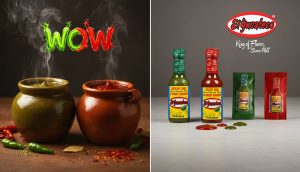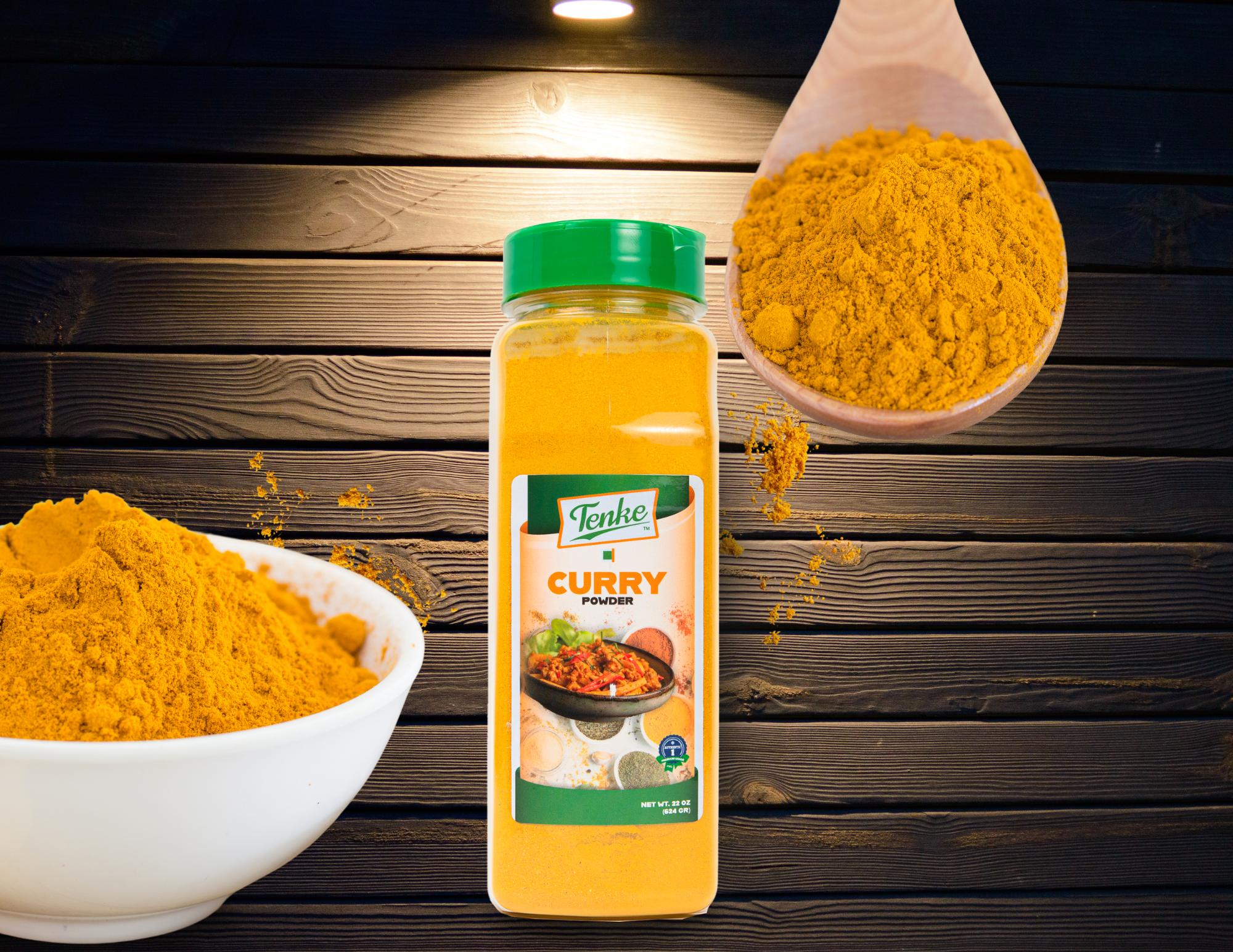
Credit for having gifted hot sauces to the world goes to the ancient Central American civilizations. Circa 7000 BC, the Mayans, Aztecs and Incas spotted the chili pepper in the wild, and began experimenting with it. The hot and fiery outcome must have truly appealed to their senses, and they began cultivating it in earnest. Thus, the first generation of chili peppers found its way into the kitchen, and since then has enchanted both cooks and foodies alike.
 From the early Central American habitat, the chili pepper travelled all over the world and diversified into many different types. Each of these varieties resulted in a unique hot sauce, the difference in taste being attributed to the soil, climate and humidity of the particular region. Therefore, it is but natural that hot sauces vary from one region to another, despite the commonality of the basic ingredients.
From the early Central American habitat, the chili pepper travelled all over the world and diversified into many different types. Each of these varieties resulted in a unique hot sauce, the difference in taste being attributed to the soil, climate and humidity of the particular region. Therefore, it is but natural that hot sauces vary from one region to another, despite the commonality of the basic ingredients.
In fact, currently almost every region in the world boasts of its own variation of hot sauce that echoes the local tradition, culture and food habits of the people. An obvious example is that of El Yucateco, a hot sauce that seamlessly blends the cultural traditions of New Mexico with contemporary cooking methods.
So, while checking out the various hot sauces for personal use, do not get intimidated by the types, colors and names. Rather go all out and try one at a time till you identify the blend that appeals the most.
 What All Goes into A Hot Sauce?
What All Goes into A Hot Sauce?
One of the most interesting aspects of hot sauces is that each of the varieties hails from a specific region. Yet, there is a common factor that binds them together, namely the one and only chili pepper. As it turns out, ‘hot sauce’ serves as a common umbrella term which covers a large number of members, with each having a unique personality. Regional disparities notwithstanding, all hot sauces contain –
Chili Peppers
Because this natural spice dictates the degree of heat and flavor, it rightly deserves the status of being the main ingredient.
 Gauge the importance of the chilli pepper by the fact that the type chosen can drastically transform the entire character of the sauce. To this effect, some popular types include –
Gauge the importance of the chilli pepper by the fact that the type chosen can drastically transform the entire character of the sauce. To this effect, some popular types include –
- Jalapeno, which adds a touch of freshness and is not as hot as some of its cousins, as evident in the Louisiana hot sauces;
- Habanero, which imparts a generous dash of heat contrasted by a bit of sweetness, a popular outcome being the El Yucateco;
- Serrano, which provides an instant kick owing to combining intense heat with bitterness, as is the custom in Mexico;
- Scotch Bonnet, which packs a fruity punch with plenty of heat, and is distinct in terms of flavor;
- Ghost Pepper, which is one of the hottest, and is notorious for leaving a fruity and smoked after-taste;
- Carolina Reaper, which is the hottest member of the chili pepper family;
 Now that you know the various types, use this knowledge to infuse your culinary creations with the right hot sauce. For example, try a jalapeno based Louisiana hot sauce for a soothing evening, or a mild snack. Likewise, pick one of the intense hot sauces, like the El Yucateco, or Scotch Bonnet to start the day with a ban. Prepare a truly punchy cocktail, or lace the dinner with a hot-and-sweet after-taste with one of the Caribbean varieties.
Now that you know the various types, use this knowledge to infuse your culinary creations with the right hot sauce. For example, try a jalapeno based Louisiana hot sauce for a soothing evening, or a mild snack. Likewise, pick one of the intense hot sauces, like the El Yucateco, or Scotch Bonnet to start the day with a ban. Prepare a truly punchy cocktail, or lace the dinner with a hot-and-sweet after-taste with one of the Caribbean varieties.
Vinegar
Not only does this ingredient complement the chilli pepper, but also acts as a preservative. Popular varieties that lace hot sauces include apple cider, red wine, malt, balsamic, distilled and rice wine.
What every hot-sauce enthusiast must remember is that vinegar types differ in terms of acidic content and tanginess, both of which can skew the taste profile of the sauce. So, while exploring different hot sauces, you must check the type of vinegar used in addition to the chilli pepper variety. As a broad guideline, bear in mind that a hot sauce containing –
- Red wine vinegar will carry a strong tang, and is a perfect choice for marinating red meats;
- White wine vinegar has a more subtle flavor, and hence is an ideal soul-mate for fish preparations;
- Balsamic vinegar leans towards sweetness, and should be the first choice for salad dressings and glazing roasts;
- Apple cider vinegar tastes fruity, and complements baked items;
 Awareness of vinegar types comes in handy not just while using hot sauces for cooking, but also while preparing your own version of this condiment. This ingredient can spell the difference between an appetizing and enticing outcome or a mismatch of flavors, which is why you must make it a point to check the type.
Awareness of vinegar types comes in handy not just while using hot sauces for cooking, but also while preparing your own version of this condiment. This ingredient can spell the difference between an appetizing and enticing outcome or a mismatch of flavors, which is why you must make it a point to check the type.
Spices, Herbs and Other Ingredients
Commonly used spices include cumin, garlic, onions and coriander powder, but the ground rules in this regard are flexible. For example, hot sauces hailing from some regions contain paprika, while others are laden with cardamom or soy derivatives. Suppose you decide to prepare a hot sauce at home, or create a dressing, use the freedom to add spices as per your instincts, and tweak the recipe to create something new.
 Herbs meant for a hot sauce could be fresh, dried, mixed or assorted, but overall, oregano and cilantro emerge as popular options. Then again, the sky is the limit, and you can experiment with different herbs and check if they bring out the best in the hot sauce of your choice.
Herbs meant for a hot sauce could be fresh, dried, mixed or assorted, but overall, oregano and cilantro emerge as popular options. Then again, the sky is the limit, and you can experiment with different herbs and check if they bring out the best in the hot sauce of your choice.
Other ingredients that can render the hot sauce truly unique include seasonal fruits, like mangoes, avocado, or peach. Sweeteners like honey, maple syrup or sugar balance and contradict the heat. However, not everyone finds excessive sweetness in a hot sauce appealing, so check the type of sweetener as also how sweet the sauce actually is before buying.
Base
Hot-sauce preparation begins with a base, and some common options include –
- Chili, wherein you can use one or combine several varieties to form a delicious hot mix;
- Tomato, which provides a strong tangy flavor that can be balanced by adding hot and sweet ingredients;
- Vinegar, to lend a dash of acidity which varies in terms of strength, and also acts as a preservative;
- Fruits, which do not represent common practice, and are limited to specific cultures and regions, like citrus in Mediterranean countries, mangoes in tropical climes, and pineapple in the Caribbean;
 Purpose of using a base for hot sauces is to add volume and flavor, with other ingredients playing a supportive role. Knowledge of the basic ingredient can help you identify the appropriate hot sauce for the dish you have in mind. For example, a tomato based hot sauce works well for pasta, while a lemon or vinegar base adds zing to salads. Likewise, a fruit-based hot sauce goes well with any kind of bread and something like El Yucateco is versatile to the point of accompanying rice, burgers and fries.
Purpose of using a base for hot sauces is to add volume and flavor, with other ingredients playing a supportive role. Knowledge of the basic ingredient can help you identify the appropriate hot sauce for the dish you have in mind. For example, a tomato based hot sauce works well for pasta, while a lemon or vinegar base adds zing to salads. Likewise, a fruit-based hot sauce goes well with any kind of bread and something like El Yucateco is versatile to the point of accompanying rice, burgers and fries.
Hot Sauces Can Be….
Fermented – When chili peppers are soaked in brine for several weeks, the outcome is a salty, dull-colored but well-flavored hot sauce. During fermentation, addition of whole spices like cinnamon, cloves or cumin adds a subtle touch of warmth. Hot sauces prepared in this way are relatively mild, and carry a mélange of flavors, like the Southern American variants.
Non-fermented – These are freshly prepared by blending together multiple ingredients, with one of them serving as the base. As a result, these hot sauces appear brighter, and carry a sharp taste that hits you hard. The Haitian Ti-Malice stands out as a good example of a non-fermented variety and multiple flavors.
A ground rule while choosing between the two varieties entails first deciding what you prefer. If it is heat that you are after, then pick any non-fermented variety that contains one of the hottest chili peppers and plenty of spices. For flavor, choose a fermented hot sauce which adds a quiet touch to the meal through its delicate character, like Cajun or Buffalo.
Pairing Hot Sauces with Food
Given the varieties, it is but natural for anyone to feel intimidated and confused while picking a hot sauce for meal preparation. A good way to start entails classifying the food, wherein it could be –
- Salty, with the dish being saltier than normal, and salt standing out as the dominant ingredient;
- Savory, which contains salt, but not as much as to mask the other flavors;
- Sweet, wherein the food is flavored with a generous addition of sugar, honey or any other sweetener;
- Sour, the flavor being imparted by lemon or tangerine;
- Bitter, wherein the food tastes distinctly pungent;
Having figured out the food profile, the next step entails choosing a hot sauce that complements the particular taste by either enhancing it or contradicting it. For example, bitter and sweet make a good combination, and hence can be paired. A dessert laced with spicy bitter hot sauce can surprise everyone, as can a bitter vegetable preparation with a sweetened hot sauce drizzled on it.
To be able to judge accurately, squeeze a bit of hot sauce on the back of your hand and try out what it tastes like. Sampling before buying opens up your mind to various possibilities and ensures accurate selection.
Final Thoughts
 Understanding hot sauces entails bearing in mind several factors, primary among them being regional variations. In most cases, the humble hot sauce is an outcome of the agricultural practice prevalent in the area, in which case it becomes a symbol of pride and social identity.
Understanding hot sauces entails bearing in mind several factors, primary among them being regional variations. In most cases, the humble hot sauce is an outcome of the agricultural practice prevalent in the area, in which case it becomes a symbol of pride and social identity.
So, every time you swipe a bit of hot sauce, do bear in mind its significance as a cultural icon to decipher the taste. Hot sauces might be just condiments, but explore with an open mind, and they reveal a lot more than what meets the taste bud.










